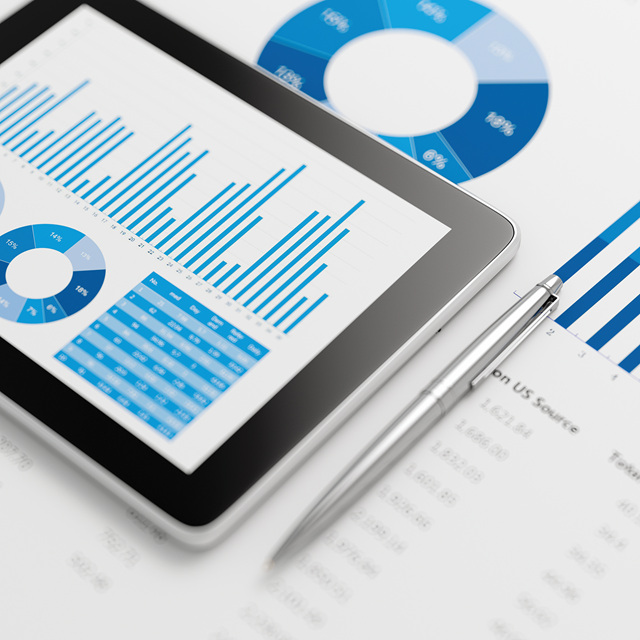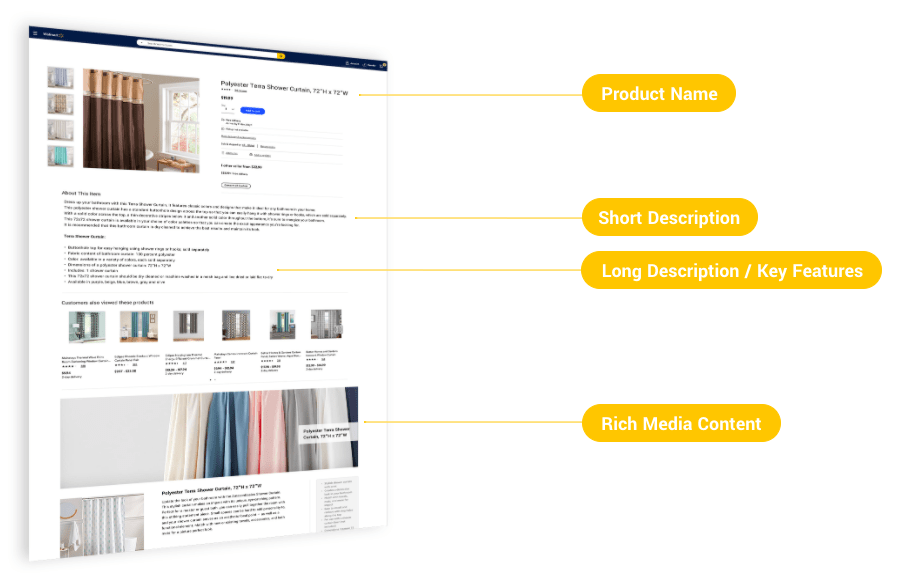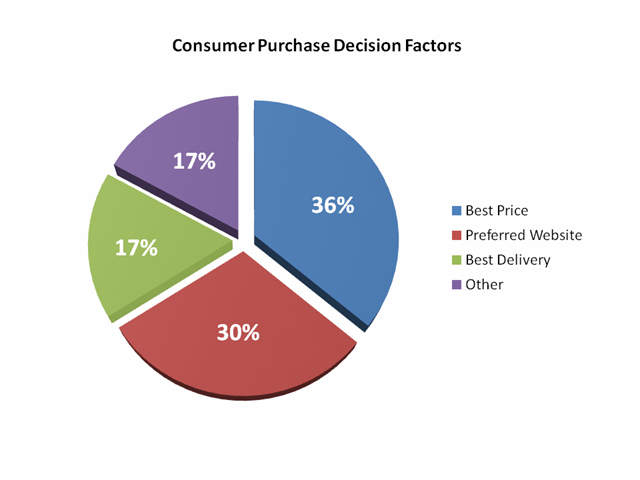The availability of consumer data has made it easier for retailers to direct ad campaigns and product recommendations to individual consumers and specific behavioral groups. Customer behavior data can help ecommerce businesses personalize promotional offers, drive conversions through behavioral pattern recognition, and find areas that are performing well and ones that need a tune-up. Every ecommerce business should have a personalized, predictive customer behavior analysis (CBA) model.

Benefits of a Solid CBA Model for Ecommerce
Insights from CBA can help ecommerce businesses personalize advertising, replicate long-term customers, reduce acquisition costs, and increase leads and conversions. Targeting email promotions, recommendations, and campaigns to individual consumers offers personalized solutions that drive further sales. Satisfied customers are more likely to recommend the brand to friends and relatives, or share products on social media or through email. Using big data analysis, ecommerce businesses can find consumers with behavior similar to their best customers. eTailers can replicate the marketing efforts made to obtain and keep lifetime customers to create leads and potentially gain conversions. Knowing what consumers are looking for and predicting future behavior that may influence purchases means less guesswork when creating marketing campaigns. Determining like behaviors and gleaning valuable insights when creating successful campaigns the first time around helps reduce the amount of money spent trying to acquire customers. Having a predictive CBA model in place assists an ecommerce business through:
- Better personalization: being able to create marketing directed at customers as individuals
- Driving relevant content: add content based on popular content areas, topics, or consumer feedback from a variety of platforms
- Design ICPs: big data analysis helps create specific profiles through the accumulation of digital information using CBA strategies
- Predicting future behavior: tracking and analyzing individual data can help ecommerce businesses predict the next step in a customer’s purchase evolution
- Finding best marketing practices: gathering customer behavior data to see what strategies are working and what practices need an overhaul
- Tracking the consumer journey: tracking from discovery to ordering and beyond, then using data to drive recommendation engines and direct advertising campaigns
- Adjusting analytics models and data mining strategies: help determine where data mining strategies are successful and what type of customer information gathering works but that still maintains brand trust
Customer behavioral analysis is becoming extremely popular in ecommerce. An estimated of ecommerce businesses uses predictive CBA for acquisition, growth, and retention rates. By focusing on individuals or specific behavior groups, retailers can increase consumer satisfaction and turn visitors into repeat customers.
Types of Customer Behavior Analytics Models to Choose From
Customer behavior models are meant to answer set questions based on customer data analysis. Up until recently, the RFM (recency, frequency, monetary) model was considered the most effective method for CBA models. The primary goal of RFM is to focus on sales, and ecommerce specialists have realized this model of analyzing customer behavior has become obsolete. With the increase in data available and consumers’ need for a personal connection to brands, models have evolved to include those that focus more on consumer satisfaction than sales. The idea behind the shift is that sales will follow satisfaction, making the consumer the most important factor. There are three main CBA models that work better for ecommerce than RFM:
1. Customer Journey Analytics
Analyze data from all channels the customer interacts with throughout the entirety of their experience with your brand. This model helps an ecommerce business determine what drives consumer purchase behavior. Track four major steps in the purchase path to get a full picture of consumers’ journeys:
- Awareness: influences and triggers
- Consideration: product and ecommerce brand research
- Conversion: where and when purchase decision was made, what step in the journey
- Evaluation: experience, feedback left, satisfaction rating, review, any user-generated feedback
Gathering data from each step of an individual customer’s journey can aid ecommerce businesses in developing or adjusting personalized eCommerce marketing strategies.
2. Behavior Segmentation
The behavior segmentation model entails collecting data about the actions customer take, based on behavior patterns during the purchase-decision process. The data is used to help classify behavior groups and develop engagement strategies. Behavior classification is a better way to create groups of like-minded consumers without relying on age or geographic locations.
3. LTV
Modeling customer behavior analytics includes collecting customer’s data to determine their lifetime value (LTV) to an ecommerce business to obtain actionable insight on how to maintain customers with like behaviors long-term. Unlike RFM, which focuses primarily on immediate sales value gained by conversions, LTV is centered on the value of a consumer through their entire time with a brand.
Ways to Use Customer Behavior Analytics to Increase Conversions
The three most important attributes consumers consider when deciding where to shop online are best price, preferred website, and best delivery methods. An ecommerce site is more likely to be preferred if they are in tune with consumer behavior and display knowledge about consumers as individuals.
One of the primary benefits of using predictive CBA is the opportunity to transform data insight into conversions for your ecommerce business. There are three key ways predictive analytics models can make the largest impact on ecommerce conversion rates:
- Increase customer satisfaction ratings: Predictive CB analysis obtains data from designated areas that can be used to increase customers’ personal experiences. The more satisfied consumers are, the more likely they are to recommend the brand to friends and relatives through email, social media, or word-of-mouth.
- Lead-to-marketing reconstruction: Predictive analytics can determine on which areas you need to focus the advertising budget, based on consumer purchase data and user-generated feedback. Consumer data can indicate how advertising campaigns have been successful and areas that need to be restructured or omitted to achieve better results. This provides an opportunity for ecommerce businesses to increase sales through personalized and behavioral group marketing campaigns.
- Attract potential partners: Positive statistics from data analysis methods can be leveraged to promote your brand on social media platforms, advertisements, and even turned into badges that can be placed on your website. A successful CBA model displays a knowledge of industry practices for optimizing success and makes your brand a trusted source of credible information on consumer behavior analytics methods.
Having partners increases brand visibility through recommendations for a product on their blogs, advertising, or recommendation engines. CBA is useful in the collection of data pertaining to what platforms draw the most user-generated feedback, which is vital for lead-to-marketing reconstruction. Knowing which one will work best for your company takes some research into current goals and possibly past data sets for customer satisfaction.
Customizing a Comprehensive CBA Model
Data points for each ecommerce business need to be customized to their end goals. The type of customer data they need depends on what type of goal they wish to accomplish by collecting customer behavioral data. For instance, if you’re trying to create a recommendation algorithm for an automatic feature based on consumer viewing history, you won’t need age or income information. One working example of this is Amazon’s recommendation algorithm, which uses the following data sets:
- Purchase history
- Shopping cart items
- Rated and liked products
- Views and purchases
Developing a list of areas vital to the goal they wish to accomplish helps ecommerce businesses develop a comprehensive CBA model that weeds out irrelevant data.
1. Include Unstructured Data
Using unstructured data allows etailers to gain insight from traditional forms of customer information, such as test data. These are available wherever user-generated feedback is found on social media, in comments, reviews, and other areas where consumers have direct interaction with a brand. Just because it isn’t necessarily big data, doesn’t mean it isn’t important data.
2. Know Your Goal
All the data in the world is useless if you don’t know what you’re looking for. Before developing an analytics strategy, ecommerce organizations should ask and answer the following questions:
- What does the company plan to accomplish with customer behavioral data?
- What metrics matter to the goal?
- What are specific areas of concern?
Not having a clear view of what consumer data gathering is meant to accomplish but developing a strategy for behavioral data collection anyway is an exercise in futility. The influx of data alone just causes confusion. Determine motives. For example, is the company’s primary concern cart drop-off, conversion rates, or poor advertising campaign results? Obtaining clarity prior to the implementation of a CBA model saves time and supplies retailers with accurate data sets that apply to a specific goal.
3. Focus on Relevant Data Sources
Only use data that focuses directly on your end goal. Each data collection effort should center on resolving a very specific set of issues or accomplishing a business goal. Focusing on specific criteria provides ecommerce businesses with more reliable data results.
4. Sources of Data to Include
There are three primary ways to collect customer behavior data, and all three data areas must be considered while developing a comprehensive CBA model.
- Direct contact: phone, email, surveys, user-generated feedback, etc.
- Digital tracking: collecting data on behavior patterns such as purchase history, reordering, view habits, shares, etc.
- Competitor strategies: tracking competitor success with data collection methods, and adopting relevant methods.
With any form of digital data collection effort, and some direct efforts, software generally sorts results and breaks them into understandable pieces of data. This way, retailers can gain actionable insight faster and negate human error. Without data-sorting software applications, piecing through vast amounts of digital data could take months.
5. Build a Customized CBA Model
Customize your CBA model as much as possible to gather actionable insight into consumer behavior, what drives purchases, or why customers don’t follow through. Design a CBA model that uses analytics methods that are relevant to your brand. For a CBA model to be successful, it needs to fit your specific goal and provide accurate real-time data that applies to that goal. Using a cookie-cutter version of CBA isn’t going to produce tailored results, but there are some steps that should be included in every CBA build. In our , the primary steps to include during the build of a CBA model are broken down. The steps include tools like predictive and funnel analysis methods.
What Are Ecommerce Businesses Presently Using CBA For?
The level of actionable insight received from the end results of CBA helps retailers keep customers that generally drop off prior to conversion. In fact, 63 percent of ecommerce businesses use the data to increase customer satisfaction rates, while 46 percent use it to elevate loyalty in existing customers. One of the most popular ways to use predictive analytics rests in recommendation engines like the one created by Amazon. The majority of Netflix viewer activity is driven by their recommendation service, and it’s estimated it saves the company $1 billion per year by reducing turnover rates. A key benefit of CBA is customization to individual consumers, which makes it crucial to ecommerce success. One study shows that of consumers often switch brands when advertisements are not personalized to their habits. The possibilities for data-driven success are endless using CBA, especially when combined with other customer behavior data analysis methods and AI technology.
What information on CBA did you find most helpful? We’d love to hear how CBA has changed your ecommerce company for the better and any tips you might have about creating a successful model. Want help reaching your goal? Please contact eZdia to learn how we can assist. We strive to offer services that help ecommerce businesses reach their full potential. This is done by developing engaging content, analyzing and developing data for algorithms, managing content, and providing other valuable ecommerce content solutions.







